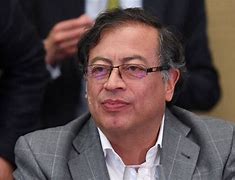Global Economy Japan in a Tight Spot U.K. Boosts Military Spending A Cautious Bank of England Europe’s Economic Outlook Advertisement SKIP ADVERTISEMENT You have a preview view of this article while we are checking your access. When we have confirmed access, the full article content will load. Supported by SKIP ADVERTISEMENT
—
Challenges Faced by Starbucks
In the ever-evolving world of coffee culture and economic dynamics, even industry giants like Starbucks are not immune to challenges. The recent news of a 50 percent drop in profits has raised eyebrows and sparked discussions among investors and analysts alike.
Despite facing headwinds such as tariffs on certain products and soaring coffee prices, Starbucks remains steadfast in its commitment to executing a successful turnaround strategy. This dedication was echoed by the company’s chief executive, Brian Niccol, during a quarterly earnings call with investors.
Progress Amidst Adversity
Amidst the turbulent waters of financial fluctuations, there shines a glimmer of hope for Starbucks as signs of progress emerge from their strategic endeavors. Niccol emphasized that they are not simply rebuilding their business but striving to create an enhanced version that resonates with both consumers and stakeholders.
During the first quarter, global same-store sales experienced a marginal decline of 1 percent compared to the previous year—a noteworthy improvement considering earlier setbacks. While net earnings plummeted by 50 percent to $384.2 million, global revenues witnessed a 2.3 percent increase to reach $8.7 billion for the quarter.
The Chinese market, which stands as Starbucks’ second-largest sector and had previously encountered challenges, showcased stability with flat same-store sales—an encouraging contrast from an 11 percent decline reported a year ago.
Navigating Strategic Decisions
Last autumn brought whispers of potential strategic partnerships for Starbucks in China; however, no updates were provided during the recent earnings call. Despite this ambiguity, one thing remains clear—Starbucks is committed to exploring innovative avenues that align with their growth objectives.
Acknowledging the need for organizational restructuring amidst evolving market demands, Starbucks announced plans to trim its corporate workforce by 1,100 employees—a strategic move aimed at enhancing operational efficiency while investing in frontline staff such as baristas.
In line with enhancing customer experiences through efficient service delivery mechanisms, Starbucks initiated programs empowering baristas to seamlessly manage shift schedules—a step towards optimizing workforce productivity while catering to fluctuating consumer demands.
Enhancing Customer Experience
Responding proactively to customer feedback regarding prolonged wait times during peak hours, Starbucks introduced an order-sequencing program designed to streamline operations and reduce service durations significantly.
Stores implementing this initiative witnessed a notable reduction in average wait times by two minutes—with most customers now receiving their orders within four minutes during peak periods—an accomplishment applauded by both patrons and management alike.
As developments unfold within the realm of coffee retailing and consumer preferences continue shaping industry landscapes globally,
Starbucks stands poised at the intersection of tradition and innovation—navigating rough seas with resilience,
determination,
and unwavering commitment towards redefining excellence within every cup poured across its vast network of stores worldwide.
—








Leave feedback about this